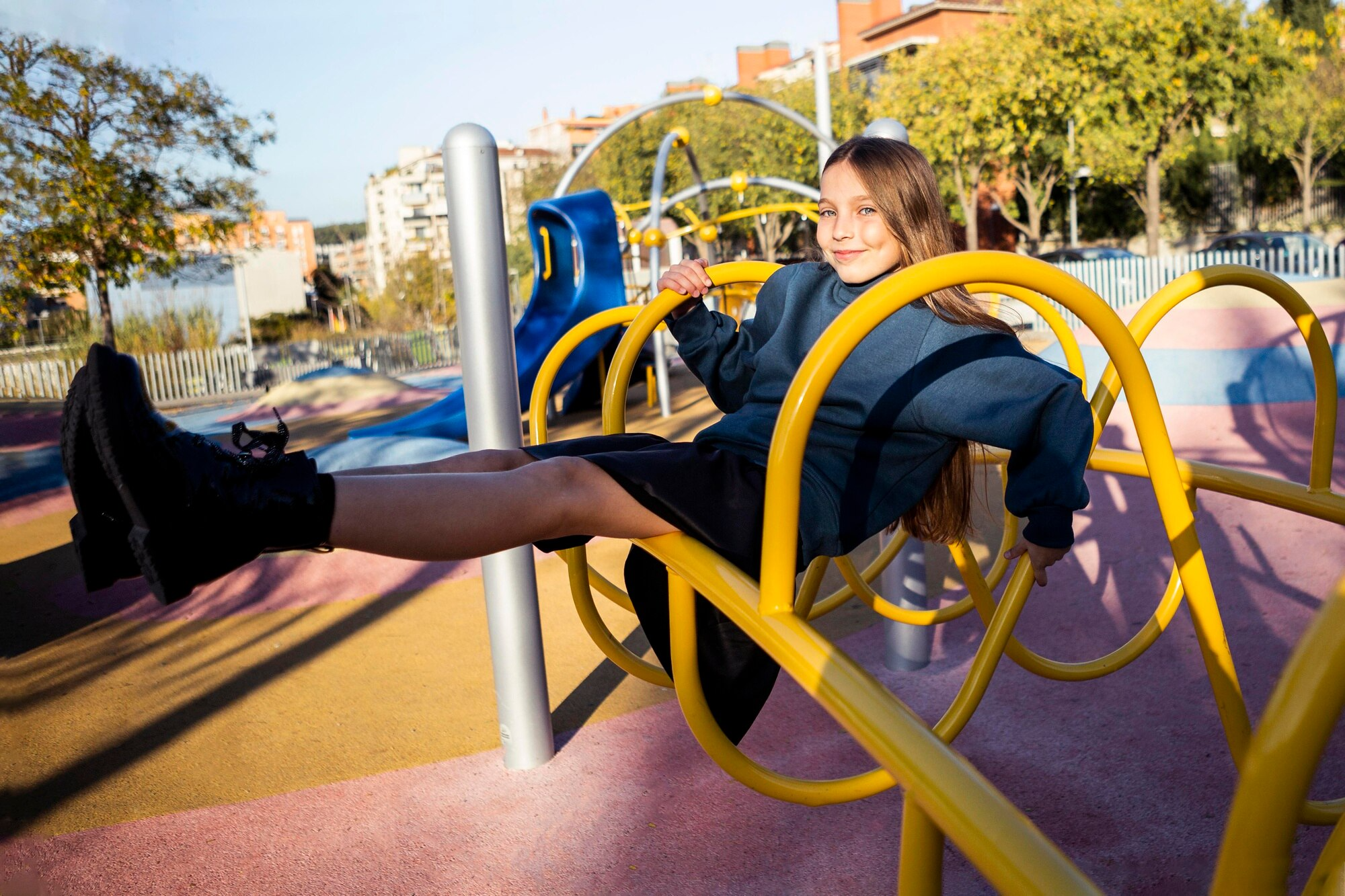Playgrounds are evolving. No longer just a place for swings and slides, today’s outdoor play areas are designed to offer more than fun—they’re places for learning, inclusion, creativity, and connection. Across the UK, councils, schools, and housing developers are investing in modern playground equipment to meet the changing needs of communities.
As public space becomes more important than ever for health, wellbeing, and social interaction, so too does the role of play. This article explores the latest trends shaping playground design in UK communities, from sustainable materials and inclusive layouts to nature-inspired play zones and digital integration.
1. Inclusive and Accessible Play
One of the most important trends in modern playground design is the focus on inclusivity. A truly successful play space allows children of all abilities to take part, regardless of physical or cognitive needs. Accessible pathways, wide ramps, tactile panels, sensory features, and ground-level activities are becoming standard features in many new playgrounds.
Inclusive design also considers carers and parents. This means seating with good sightlines, shaded rest areas, and social spaces where adults can interact or supervise comfortably. The goal is to create playgrounds that welcome everyone—children, families, and those with additional needs.
2. Natural Materials and Eco-Friendly Design
As environmental awareness grows, so does the demand for eco-conscious playground design. Many UK communities are choosing natural materials like timber, stone, and rope to create spaces that blend into the environment rather than stand out from it.
Recycled plastic, sustainably sourced wood, and permeable surfacing options such as bonded rubber mulch or bark are becoming more common. These materials reduce the carbon footprint of a project while also providing a more natural and calming setting for children.
Nature play areas—where logs, rocks, and plants form the play structure—encourage exploration and interaction with the natural world. These zones support imaginative play, sensory development, and a stronger connection to the outdoors.
3. Outdoor Learning Spaces
With growing interest in outdoor education, especially after the COVID-19 pandemic, many schools and community organisations are integrating learning into their playgrounds. Outdoor classrooms, storytelling circles, and activity panels with numbers, letters, or scientific themes help children learn while they play.
Trail-style play equipment, such as trim trails or obstacle courses, can also double as fitness circuits for PE lessons. By blending curriculum goals with physical activity, these areas support whole-child development and reduce screen time.
4. Adventure and Risk-Based Play
Today’s playgrounds are starting to move away from overly safe, sanitised designs. Instead, many are embracing age-appropriate challenges that help children assess risk and build resilience. Climbing structures, high towers, boulders, loose parts, and balance beams all encourage a sense of adventure.
By giving children the freedom to explore, test their limits, and problem-solve in a safe but stimulating environment, these spaces promote confidence, cooperation, and decision-making.
Of course, safety remains a key factor—modern playgrounds still meet all British and European safety standards, with careful attention to surfacing, spacing, and materials.
5. Multi-Use Equipment for All Ages
Playgrounds are no longer just for toddlers. Many UK communities are designing play areas that include spaces for older children, teens, and even adults. Multi-use games areas (MUGAs), parkour zones, fitness equipment, and table tennis tables encourage continued engagement as children grow older.
This approach also promotes family use of the space—parents and teenagers can stay active while younger siblings enjoy traditional play equipment. Providing something for everyone helps reduce vandalism and keeps the park well-used throughout the day.
6. Customised and Community-Led Design
Every community is different, and there’s a growing trend towards customised playground designs that reflect the local area. This could be through themed play equipment, such as a seaside motif in a coastal town or historical references in a heritage location.
Many councils and developers now consult with residents, schools, and local groups before designing or upgrading a play area. Involving children in the design process also helps ensure the playground meets their real needs and encourages local pride and ownership once it’s built.
7. Integrated Seating and Social Spaces
The best playgrounds support not just play, but connection. Built-in seating, shaded picnic areas, and accessible rest zones encourage parents, grandparents, and carers to stay longer, creating a more vibrant community space.
Benches near key play equipment allow easy supervision, while seating clusters invite group chats or social events. In larger playgrounds or parks, wayfinding signs, bins, and water fountains further support daily use and long-term maintenance.
8. Sensory Play Elements
Sensory play is increasingly recognised as an essential part of early childhood development. Modern playgrounds often include features that stimulate touch, sound, sight, and movement. These might include musical instruments, sand and water tables, spinning elements, or textured pathways.
Sensory-rich environments help support children with autism, ADHD, or developmental delays. They also create more interesting and varied play experiences for all users.
9. Smart Play and Technology Integration
Although outdoor play is often seen as a break from digital devices, technology is being used creatively in some playgrounds to add a new layer of engagement. Interactive panels, app-linked fitness trails, and motion-activated games offer an alternative way to keep children moving.
Smart lighting, solar-powered charging stations, and data-gathering tools that track footfall or equipment use are also being trialled in some urban play areas. These innovations can help councils monitor use and improve future space planning.
10. Resilience and Easy Maintenance
Finally, practical concerns remain central to playground planning. With budgets tight and weather unpredictable, many UK communities are choosing durable equipment and low-maintenance surfacing. Metal frames with powder-coated finishes, vandal-resistant designs, and well-draining bases ensure longevity.
Investing in high-quality equipment from trusted suppliers means less downtime for repairs and fewer safety concerns. It also ensures that the playground continues to serve the community for years to come.
Conclusion
Playgrounds are changing—and for the better. Across the UK, modern playground design is being shaped by the need for inclusivity, sustainability, learning, and community use. Whether you’re designing a park for a rural village or a multi-use trail in an urban development, understanding these trends will help you create spaces that are well-used, well-loved, and future-ready.
Thoughtfully designed play areas can inspire creativity, promote health, and bring communities together. By staying informed about what’s working in the world of playgrounds, planners and providers can make sure every project delivers lasting value..
Stay in touch to get more updates & alerts on Baddieshub! Thank you




